- in Blog , Learning by David Wilkinson
- |
- 2 comments
The Ultimate Guide to Changing People’s Beliefs, Values and Emotional Reactions – The Affective Domain

The complete guide to changing people’s beliefs, values and emotional reactions.
Affective development: What it is and how to do it – ethically
Probably the most ignored and misunderstood area of development in learning, training and education is that of ‘affective development’ or the affective domain: how to develop peoples values, beliefs and emotional reactions to things. Bloom’s affective domain is at the same time probably the most interesting and the most neglected domain of learning.
Other articles in the series
This article follows on and is connected to the following articles:
The Cognitive Domain – Why many people’s idea about how we learn is just plain wrong
At what point can you say you have learned something?
Affective
The term affect or affective describes the emotional system that lies behind much of our behaviour and action and comes from the Latin ‘afficere’ meaning to act upon and to influence.
Issues with the other domains of learning
His work on the psychomotor domain was unfinished and subsequent work by others focuses too heavily on physical skills and ignores the development of other skills like cognitive skills (which bizarrely the cognitive domain sort of covers but never really gets to grips with), emotional skills, etc. His work on the cognitive domain mixes psychological and behavioural levels. Further both these domains are levels of learning, they are not the process by which we learn. Unfortunately many people confuse the intention of these domains and assume that they are describing how we learn.
They don’t.
The affective domain is different. It both describes the levels of development and how people develop.
Why the affective domain gets ignored…
The affective domain comes a very poor third in many university curricula training programmes and coaching interventions largely because it is not well understood. Teacher, lecturer and trainer development programmes pay it scant regard, often not mentioning it at all, or if it is mentioned it is a secondary consideration.
So why is the affective domain ignored?
The first set of reasons for this, I suspect, is because it appears difficult and hard to measure, see and test and can, in some cases, take years.
Secondly, it is quite hard to see how to ‘teach’ (preach) it. This is usually because trainers, teachers and lecturers are focused on passing over information rather than on facilitating development.
Thirdly, people just don’t understand it. It all feels a bit ethereal. Just how, for example, do you change someone’s values, beliefs and emotional reactions to things?
Lastly there is an ethical question which stops a few dabbling in this area; should we be engaged in changing people’s values, beliefs and emotions?
More about this later – as you will see this question / issue is based on a fundamental misunderstanding of values, beliefs and emotional (affective) change.
What the affective domain is about
The affective domain describes probably the most neglected and yet the most important aspect of learning, the system that underpins, limits and directs all of our learning.
In effect our affective domain is the system (and it is a system) of:
- emotions
- values and
- beliefs
that are the foundations of and guide our thinking, decisions, behaviour and actions.
Personally I think that of all Bloom’s work, his work on the affective domain is a work of genius.
How the elements work together
There are three primary elements of the affective system:
- The emotions
- Values
- Beliefs
Emotions
Our emotions are the feelings, internal sensations and sentiments we experience or associate with things.
Values
Our values are the weight or importance we place on things as well as the moral principles, standards and ethical codes, rules and formulae we use to evaluate (hence the word e-valu-ate) things we encounter, our own thoughts and behaviour and the actions of others. Our values inform us about how the world should be.
Beliefs
Our beliefs are the sense the something is true. It is an opinion intuition and sense we have about the way things work. Our beliefs are the ideology or framework of thinking that we use to make assumptions about how the world works. For example, the belief that walking under a ladder will bring you bad luck, or that a character with horns on their helmet must be a Viking – There is no evidence that Vikings wore horns on their helmets at all. A belief can either be true or not. It doesn’t matter because the individual assumes a belief to be true.
All three elements work together dynamically feeding off and informing each other. Together they are the basis of our perceptions and reactions to things. They are also the basis of many of our biases, prejudices, attitudes towards things, including ourselves, and the judgements and decisions we make on a second-by-second basis.
Each element informs and changes, and is in turn informed and changed, by each of the other three elements. So our values help to form our beliefs and help to create our emotional response to things. Our beliefs help to develop, strengthen or weaken our values and indicate what our emotions should be in certain situations. Our emotions are directly impacted and created by our values and beliefs and the contact they have with our perception of what is happening around us. Our emotional reactions to things also help to create, strengthen or weaken our values and beliefs. Additionally all three inform and change our thinking and behaviour and are likewise informed and changed by outer cognitions (thinking) and actions (behaviour). Further they are also influenced by our context (the culture we are in or the behaviour and attitudes of others).
Holistic
This informing and being informed by each other element in the system makes this a highly dynamic and complex learning system, involving the cognitive, psychomotor and other skills systems, and the affective system.
This constant interplay between all the elements of the system kind of makes it a nonsense to separate them as they are intimately linked and impact each other.
Dynamic example
Consider the affect (feelings) of boredom. Boredom is a feeling that is driven by our evaluation (values) and beliefs about a situation. If we are in a classroom and lecture theatre our beliefs about the usefulness and the nature of the topic(interesting or not), evaluation of the lecturer or teacher (amazing or a twit), our general mood, whether we understand the topic etc. will all impact our engagement with the knowledge and will inform our behaviour (listening intently or sleeping), for example.
Likewise our knowledge of a subject affects (impacts) our engagement with a topic. At a very simple level, if we know more than the lecturer we are likely to find what follows boring, which will impact our engagement. If we don’t like the lecturer or love them, our values, beliefs, emotions and behaviours will all change. Change one aspect the others shift too.
Be impressively well-informed
Get your FREE organizational and people development research briefings, infographics, video research briefings, a free copy of The Oxford Review and more...
How our values and beliefs affect our emotions and decisions
Our beliefs are based on our values. So if we have a belief that the best (a value) president of the United States ever was Obama (or anyone else) (a belief) we are likely to have a different emotional reaction to a picture of Obama as opposed to one of Trump or Bush, for example. That emotional reaction strengthens the values and beliefs. What this also does is sets up a bias when dealing with any information about any of the presidents.
No matter how impartial and objective we feel we are there is a world of difference between impartial and objective observation and case building. (Nickerson 1998). What we find is that as soon as we ascribe a value and belief (an evaluation) about an issue or a person, our brain then starts to build a case to support that value and belief. This is then strengthened by our emotional reaction to the issue or person. This is the basis of confirmation bias. As we deepen our belief and strengthen our values about something (or someone) we start to unconsciously look for evidence that supports and makes the beliefs and values more consistent (Kahneman & Tversky, 1996). The more consistent the beliefs and values get, the more consistent (habituated) the emotional response to the situation associated with those values and beliefs will also get. This means that we get into the habit of reacting in a similar way to the same things and the more we convince ourselves we are right, the stronger and faster the reactions get.
Confirmation bias means that we notice and gather any data that supports our values and beliefs and dismiss (often with emotion – anger, for example) and are often even blind to any data that disagrees with our values and beliefs.
The stronger the value, the greater the belief and the stronger the emotional reactions to things we tend to have (Kollmuss & Agyeman 2002)
The affective domain
The affective domain as originally derived by Bloom is both a description of level of affective learning changing emotions, developing values and beliefs. However unlike the other domains, it is also the process of development, which is in part why I think this is genius and way ahead of its time.
The basic elements of the affective domain are:
- Receiving
- Responding
- Valuing
- Organising and
- Characterisation
Receiving
Receiving refers to the process whereby an individual starts to acquire or realise that their representation of the world may be different than the evidence suggests. In effect they start to receive the message that a change or a shift is needed in their beliefs, values or emotional responses to the situation. This occurs with direct feedback from others (being told) or through a process of realisation.
For example, if you had someone who is sexist and thinks that all male drivers are bad drivers. For ages all they do is confirm their own bias. They filter and every time a male does something wrong on the road they say something like – “there you go, see? All men are bad drivers.” If a woman does something they either ignore it or say something like “That’s just the exception that proves the rule!”
Then one day they meet a man they get on with and like. This man is a good driver. When they are out they start to notice that other men are quite good drivers as well. Now they are starting to perceive that maybe not all men are bad drivers. Now they are starting to receive the notion that the world may not be as they had perceived it. That this is a mismatch between their beliefs and the evidence from the world around them…
Responding
Once the door is open and they are starting to notice that their perceptions and the evidence are at odds with each other they are much more likely to notice it more and more, if they are honest and paying attention. If, on the other hand, their ego or an event occurs that prevents this change taking place, then the door will slam shut and they will revert to the old beliefs. This moment is perhaps the most fragile of the entire process. The moment of responding to what they are starting to notice.
If they continue to test and observe, change is likely to occur. If they snap back, change won’t happen. In order for change to occur they need to respond, emotionally and intellectually to the difference they are noticing between their perceptions and the evidence around them. If they keep looking for or are continually being provided with evidence from multiple sources they are much more likely to respond with acceptance rather than denial.
Valuing
As this process of internal responding to the difference they are noticing progresses, bit by bit they start to place a new weight or value on the new world order they are witnessing being revealed. They start to understand that men and women are equally likely to be good, bad or anywhere in between as drivers. Driving ability is not based on gender rather on skill, knowledge and experience. This process of valuing is a process of value change, where new values are created. Again the value or importance an individual will place on any situation, individual or thing is closely related to the amount of consistent feedback they get about that thing.
Organising
Our values don’t exist on their own, in isolation. Our values are connected to each other. Some are more closely connected than others.
One way to think about our values is to use the analogy of bubbles. Imagine a value is a bubble
Imagine a bubble on its own floating. It is spherical.
You will also notice that it isn’t static. It has colours swirling and changing on the surface. It is dynamic and constantly changing whilst still being a bubble.
Now what happens when we place two bubbles ( values or beliefs) side by side?
They need to change to accommodate each other, to fit, and make sense, to align whilst still being distinct and separate.
Values are similar, so if I have two interconnected values, say a standard of courtesy whilst driving, (saying thank you when being allowed through a narrow gap and a general value of politeness) these two values connect like two bubbles. The interesting thing about two connected bubbles is that they are now only semi-spherical. They have a straight line between them. They are connected but separate.
Now imagine a whole handful of soap suds/bubbles (an entire value and belief system)….
There are larger bubbles and smaller bubbles (more important values and less important values). Some values and beliefs are closer together and more connected and some are more distant, less connected and aligned and may actually be opposite each other.
Additionally, from the outside they still look like bubbles, part spherical and part straight lines where they connect with the other bubbles.
But think about this.
Think about the bubbles in the centre of the mass. What shapes are they going to be? Not spherical.
More like this…
straight edged rhomboids of many different shapes and sizes, depending how many other bubbles are connected to them.
Now imagine that the bubbles on the surface of the mass are our peripheral values and beliefs (not so important or well formed) and the ones in the centre are our core values. The values that everything else hinges on and are largely connected with. The values we hold about ourselves, about humans in general for example.
Now imagine that we want to change one of the values. Well they are always connected to other values. If you were to pop a bubble, then the others around them and connected will have to shift and change to accommodate the change. They will have to reorganise.
Now clearly if you change a small peripheral value, a small bubble of the outer edge then not a lot of accommodation or change will have to occur with the other values or bubbles. However if you had to change a core value, a bubble in the middle, a lot of reorganising is going to have to occur as the old value shrinks and a new value grows.
This change process is constantly occurring but usually in small ways that are almost imperceptible on a day to day basis. If you have a good friend you really get on with. Your values and beliefs are similar and you really get on well and then for some reason you don’t see each other for the next twenty years and then meet again, then you are quite likely to notice some differences. All those small changes add up over the years in a compound effect to something that can be startlingly different.
No change in a value or belief occurs on its own. Other values and beliefs will have to change to accommodate their next door neighbours and as they change to accommodate their neighbours a chain reaction or ripple effect across the mass of values or bubbles is set up. This is the process of organisation as the new value becomes embedded and subtly changes, subtly, the connecting values.
Characterisation
Characterisation is the point at which the new value or belief settles down, is embedded and just becomes part of who we are. We now espouse that value of belief consistently and without thought.
As mentioned in the article xxxx characterisation is the point at which we can say we have learned. The point at which the thing we have been learning just becomes part of us. No effort, no thought, just fluid action as a habit.
The ethics of changing people’s values, beliefs and emotional responses
In short, deliberately setting out to change someone’s values, attitudes and emotional reactions to values, beliefs and emotional reactions you think they should have is called indoctrination, also known as brain washing. There are a variety of methods of indoctrination that work such as, for example:
- Repetition of a consistent message
- Reward and punishment (passing v failing)
- Hierarchy and authority – this includes having charismatic leaders or role models
- Cultural immersion
- Requirement of obedience to rules, laws and axioms (with reward and punishment)
- Inclusion and ostracising (in-groups and out-groups).
Indoctrination without consent is not considered in many cultures to be unethical as it removes informed content.
Developing awareness
There is, however, a world of difference between indoctrination and helping people to become aware of their values, beliefs and reactions to things, to learn how to identify, inspect and evaluate or re-evaluate their own values and beliefs (and resultant emotional reactions and frames of thinking). This process of critical thinking and evaluation is a process of learning and invites people to consciously understand how they are making decisions and evaluating evidence.
Now you don’t have a general right to do this to people (help people become aware of their values, beliefs and behaviour) , nor are you ethically bound not to attempt to do this. However, there is an implicit consent when people engage in an educational programme. This is the stuff of education. Education is a process of helping people develop autonomy (of being able to make their own choices based on informed understanding, analysis and critical thinking) (Merry 2005).
Indoctrination and education are the opposite ends of a continuum that has degrees of freedom as its axis. With indoctrination there are few if any degrees of freedom – we control what we want people to believe by filtering and controlling the information they get. With education we facilitate a process whereby the individual learns the tools of analysis, critique, creativity, emotional control and understanding, particularly of how their values and beliefs are impacting their decisions and choices. They have the ability to know how subjective or biased they are being. At least this way any bias is as conscious as possible. At least they know about it. At that point they can start to respond to it and change it at their direction and will.
How to change people’s values and beliefs without indoctrinating them – using the affective domain
From all of this we can discern that one of the main points of an education is to help people to examine their own biases, values, beliefs and emotional reactions to things. How they think and to understand why they think what they do, and importantly to learn to be critical about their own (and others’) subjectivity.
And yet many educational institutions focus on knowledge transfer (particularly up to masters level) and omit this vital step, leaving it instead to culture and society to shape our thinking, emotional responses and beliefs.
As an educator, I am not here to move an individual student’s values, thinking or beliefs in a particular direction, I am instead here to challenge and get them to question their values, beliefs and thinking. To help them learn how to find, view, analyse, evaluate and use evidence. For them to be become evidence-based practitioners in life.
Bloom’s affective domain is, I believe a work of genius, not complicated and very useable. So how to use it?
The five steps to changing people’s values and beliefs: the affective domain in action
- Engage people in discussion: Get people’s opinions about things (not regurgitating facts but what they think about the evidence). Opinions are the windows to our values and beliefs. The idea is to get them to receive and respond (affective domain).
- Challenge people’s opinions (assumptions, beliefs, emotional reactions and thinking) and get them to work out what they are based on. the idea is to provoke a response and develop a weighing of the evidence and their values
- Provide the
- evidence
- tools and
- techniques
of challenge and critical thinking. Especially in the context of the situation or using real life cases.
- Give constant feedback about their critical thinking and use of the evidence, tools and techniques through the medium of their opinions.
- But first become an ‘educated’ critical thinker yourself….about yourself and your own values, beliefs, emotional reactions and opinions…
References
Anderson, L.W., Krathwohl, D.R., Airasian, P.W., Cruikshank, K.A., Mayer, R.E., Pintrich, P.R., Raths, J., Wittrock, M.C. (2001). A Taxonomy for Learning, Teaching, and Assessing: A revision of Bloom’s Taxonomy of Educational Objectives. New York: Pearson, Allyn & Bacon.
Kahneman, D., & Tversky, A. (1996). On the reality of cognitive illusions. Psychological Review. Vol 103 (3) 582-591
Krathwohl, D.R., Bloom, B.S., Masia, B.B. (1973). Taxonomy of Educational Objectives, the Classification of Educational Goals. Handbook II: Affective Domain. New York: David McKay Co., Inc.
Kollmuss, A., & Agyeman, J. (2002). Mind the gap: why do people act environmentally and what are the barriers to pro-environmental behavior?. Environmental education research, 8(3), 239-260.
Merry, M. S. (2005). Indoctrination, moral instruction, and nonrational beliefs: A place for autonomy?. Educational Theory, 55(4), 399-420.
Nickerson, R. S. (1998). Confirmation bias: A ubiquitous phenomenon in many guises. Review of general psychology, 2(2), 175.
Be impressively well informed

Get the very latest research intelligence briefings, video research briefings, infographics and more sent direct to you as they are published
Be the most impressively well-informed and up-to-date person around...




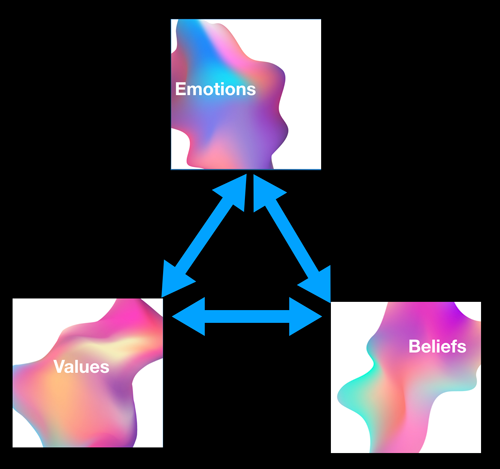

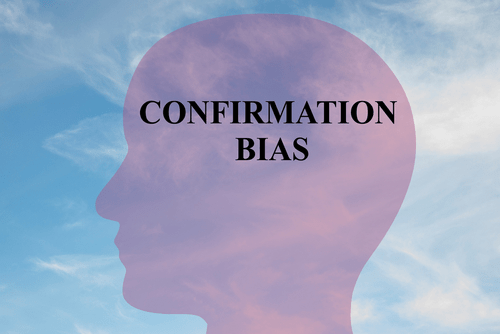

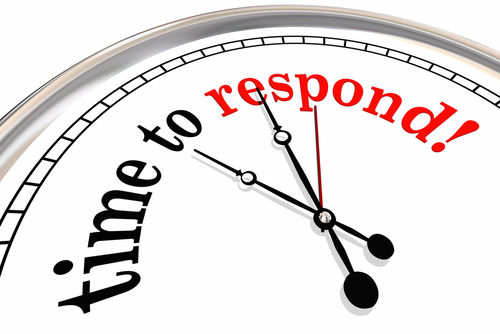





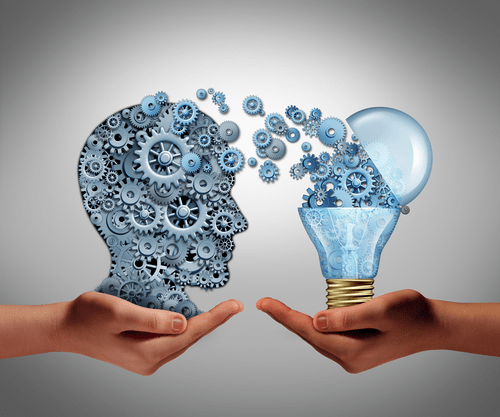
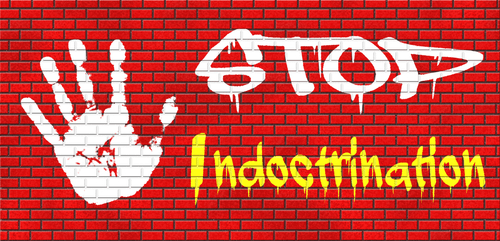

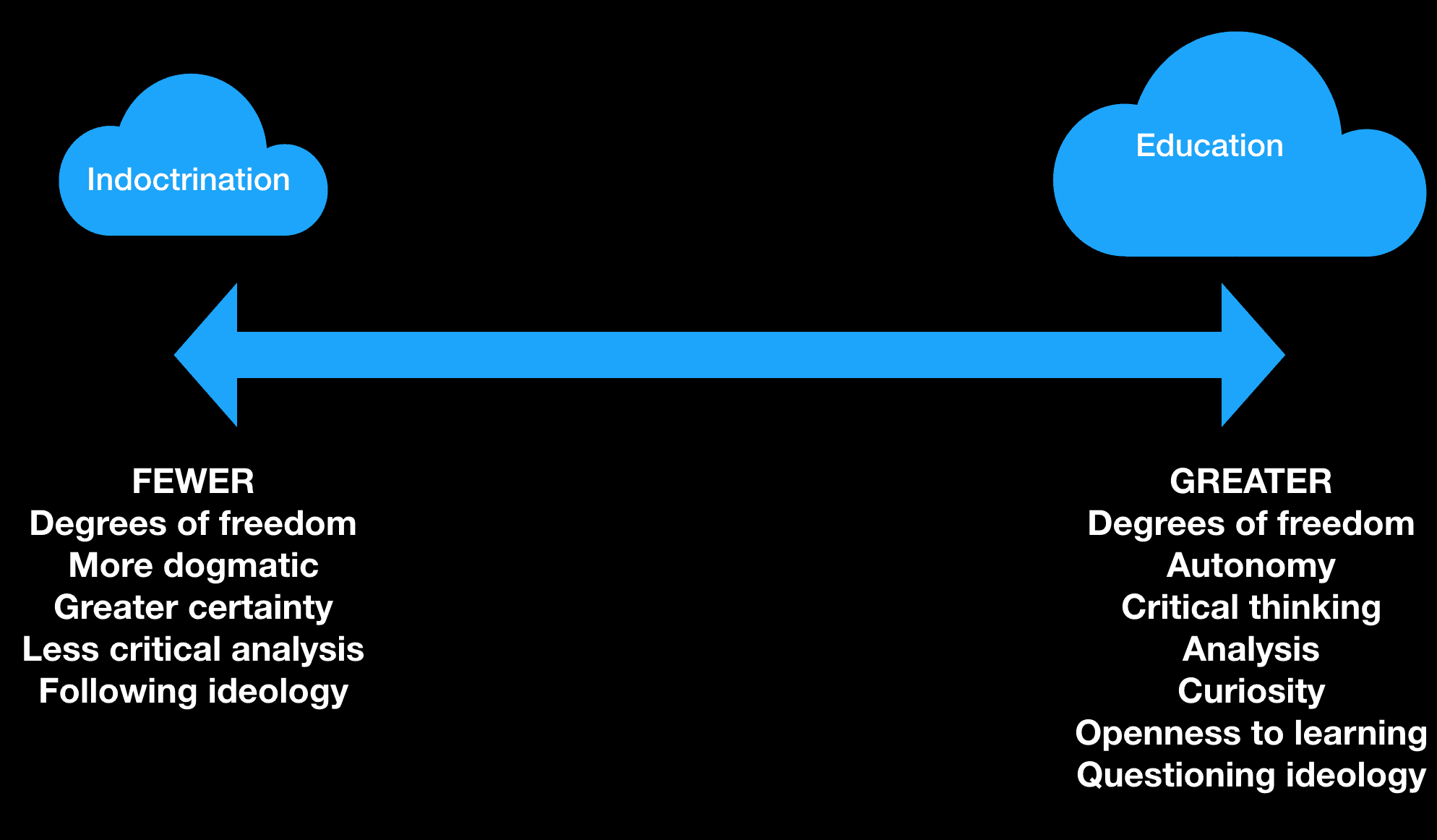
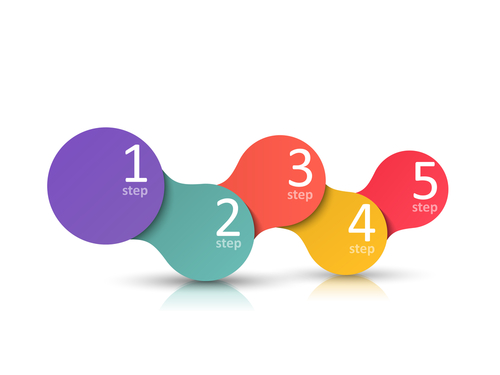
I want to thank you for putting this complex concept into such understandable and applicable terms. It helped me greatly in my school counseling endeavors, and I have passed on your article to our class. I truly understand now the basis for my thinking and the operations our brains undertake in our daily perceptions of the world around us. Not only is Bloom a “genius,” so it is, YOU, are, as well. Thank you.
“But first become an ‘educated’ critical thinker yourself…” Aye, there’s the rub!